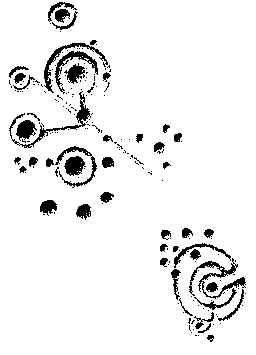 |
Science Frontiers ONLINE No. 62: Mar-Apr 1989 |
|
|
The cup-and-ring motif in america
 Typical cup-and-rings from Ireland. Drawing from Ancient Man. |
A cup-and-ring engraving consists of a hollow or cup anywhere from 4 to 30 inches in diameter, surrounded by 1 to 9 rings. The rings may be gapped, with a narrow groove running through the gaps from the outside. (See the illustration,) Cups-and-rings have been found at over 700 sites in Great Britain. Most date between 2200 and 1600 B.C.
The cup-and-ring is much rarer in the States. A few are known from Alabama, California, Georgia, Hawaii, Texas, and doubtless other states. In contrast to the British cups-and-rings, the American ones are upgapped, though otherwise indistinguishable.
What is the significance of the motif? Of course, no one can say for sure. Many in Britain are near copper and gold workings. Other are associated with burials and astronomical alignments. Some European archeologists think they represent the sun or sun god. For the anomalist, the cups-and-rings hint at an ancient worldwide culture that left its signature on rocks just about everywhere.
(Morris, Ronald W.B.; "The Cup-andRing Motif in the Rock Art of the British Isles and in America," Occasional Papers, Epigraphic Society, 17:19, 1988.)